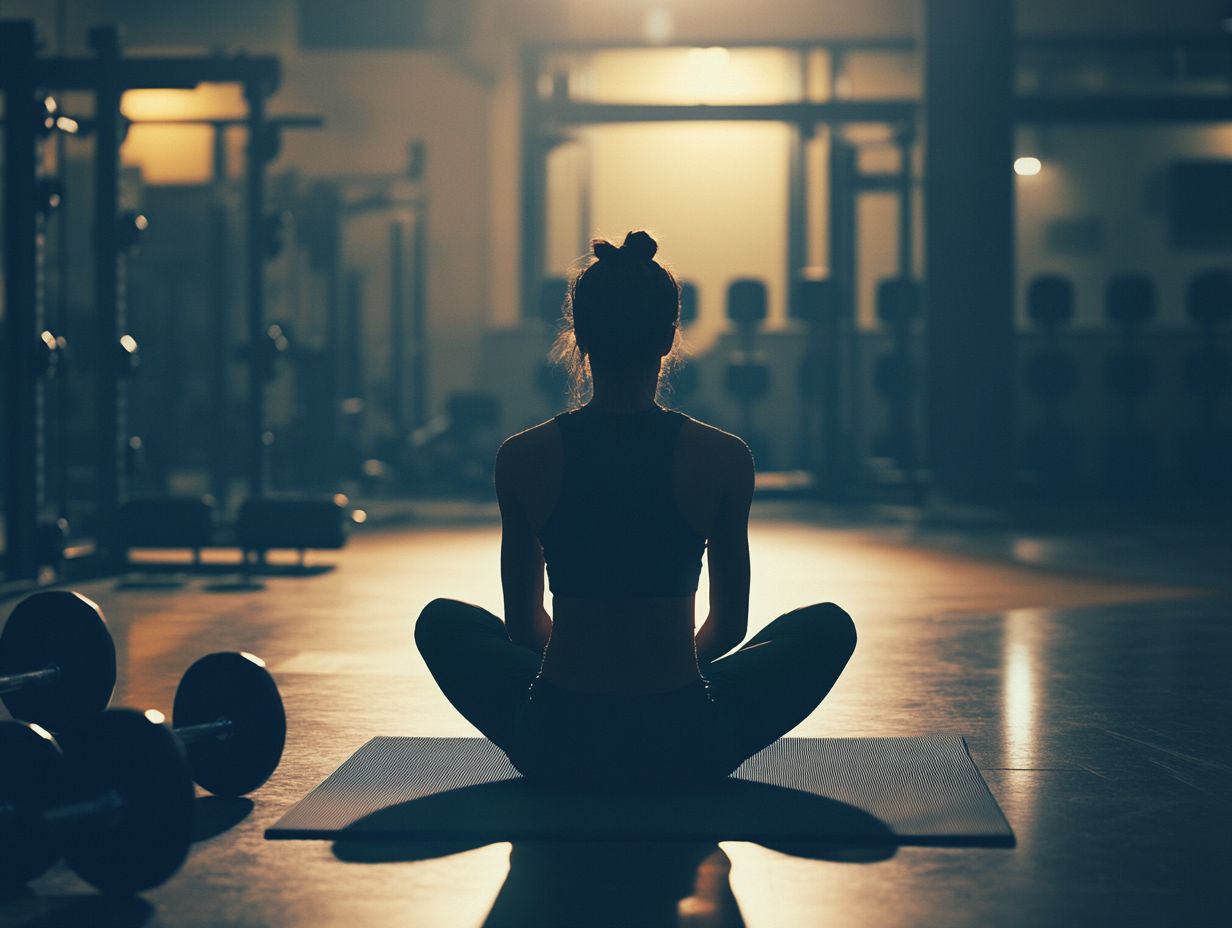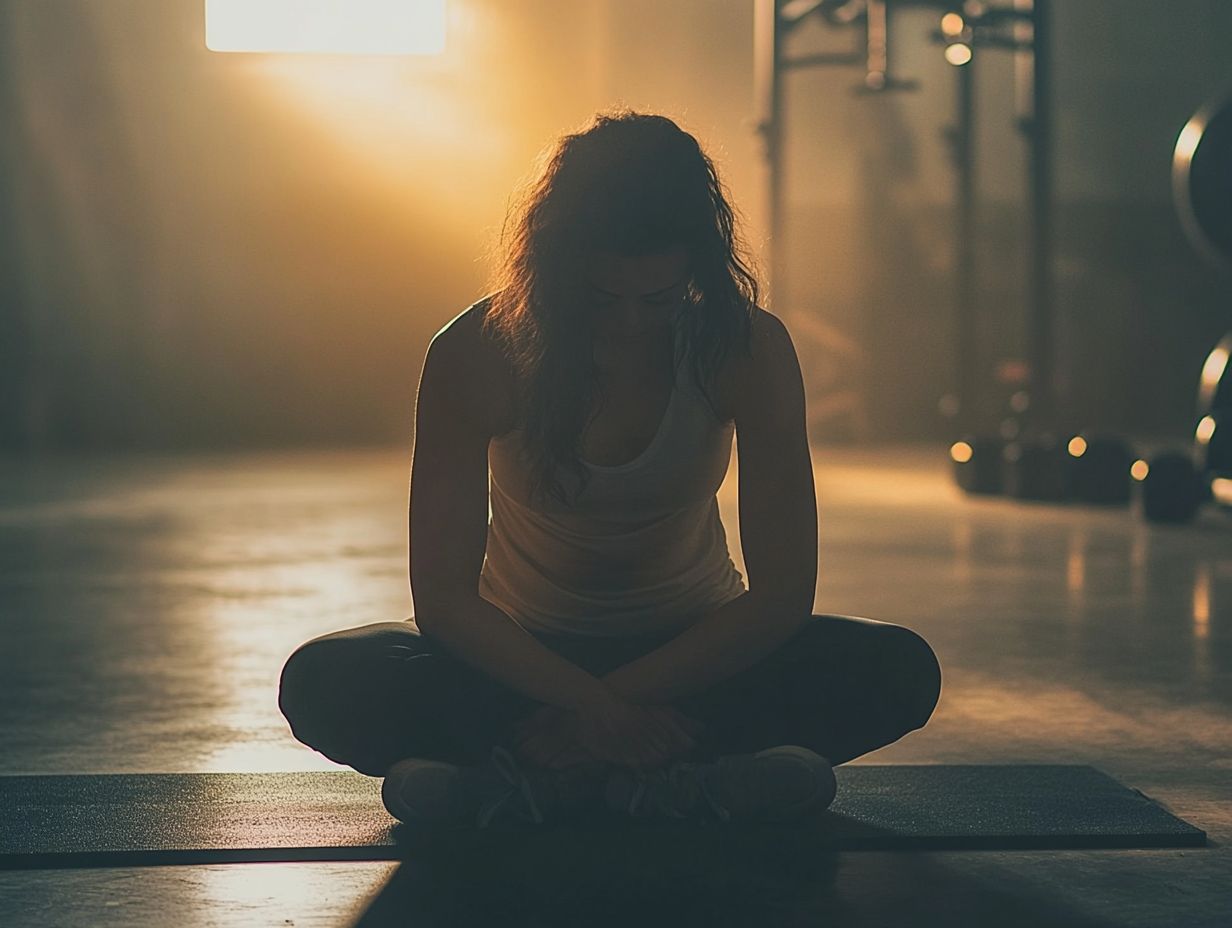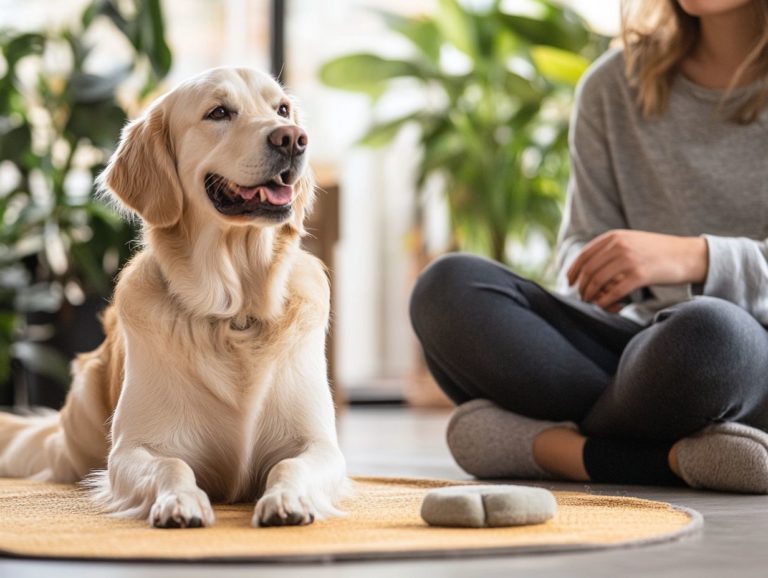Understanding the Connection Between Anxiety and Training
Anxiety can often feel like a heavy weight pressing down, but engaging in exercise may provide a welcome reprieve from its grip.
This article delves into the connection between mental health and physical activity, illuminating how different forms of exercise can assist in managing anxiety.
From crafting a personalized workout plan to integrating fitness with therapeutic practices, we offer practical strategies and insightful tips designed to empower you on your path to enhanced mental well-being.
Explore with us as we uncover effective methods to leverage the transformative benefits of exercise for meaningful anxiety relief.
Contents
- Key Takeaways:
- Anxiety and Exercise: The Link
- The Impact of Exercise on Anxiety
- Types of Exercise for Anxiety
- Creating an Exercise Plan for Anxiety Management
- Combining Exercise and Therapy for Anxiety Treatment
- Managing Anxiety During Workouts
- Frequently Asked Questions
- What is the connection between anxiety and training?
- How does training help with anxiety?
- What types of training are most beneficial for managing anxiety?
- Can training worsen anxiety symptoms?
- Is it important to consult a doctor before incorporating training into an anxiety management plan?
- Can training be used as a long-term solution for managing anxiety?
Key Takeaways:

- Regular exercise can positively impact managing anxiety symptoms.
- Combining therapy with physical activity can effectively treat anxiety.
- Finding the right exercise type and creating a plan are essential for managing anxiety during workouts.
Anxiety and Exercise: The Link
Discover how exercise can change your relationship with anxiety for the better! Understanding the connection between anxiety and exercise opens up significant insights into how physical activity can effectively mediate mental health challenges, especially for those grappling with anxiety disorders.
When you engage regularly in exercise, you gain not just physical benefits but also remarkable improvements in your emotional well-being. It becomes an invaluable tool for managing stress and enhancing cognitive function.
As you consistently participate in physical activities, you may find that your anxiety symptoms diminish and your self-esteem receives a noticeable boost. This is all thanks to the release of endorphins chemicals in your brain that make you feel happy that naturally uplift your mood and foster better mental health outcomes.
The Impact of Exercise on Anxiety
The impact of exercise on anxiety is nothing short of transformative. Engaging in physical activity serves as a highly effective strategy for managing and alleviating anxiety symptoms across diverse groups, from students to those grappling with generalized anxiety disorder.
Research consistently shows that regular exercise not only enhances your physical well-being but also tackles mental health issues like anxiety and depression, ultimately elevating your quality of life.
Customizing exercise interventions to meet individual needs offers a clear plan for anxiety management, bolstering emotional well-being and resilience in the process.
How Exercise Can Help Manage and Reduce Symptoms
Exercise plays a vital role in managing and alleviating the symptoms of anxiety, boosting your physical activity levels and positively impacting your emotional state.
Aerobic exercises like running, swimming, or cycling are particularly effective; they elevate your heart rate and trigger the release of endorphins those delightful natural mood lifters. Regularly engaging in these activities not only enhances your physical fitness but also cultivates a sense of accomplishment and discipline that can be incredibly rewarding.
Yoga and tai chi focus on mindfulness and deep breathing techniques, offering unique advantages in reducing anxiety levels. By exploring various physical activities, you can find what truly resonates with you, effectively targeting symptoms in unique ways and enhancing your overall mental well-being.
Types of Exercise for Anxiety

You can choose from many excellent workouts to help reduce anxiety. You have a wealth of exercise options at your disposal that can effectively alleviate anxiety symptoms. From aerobic workouts to strength training and mind-body practices, each offers unique benefits tailored to your preferences and needs.
When you engage in a thoughtfully designed exercise routine, you not only enhance your physical health but also cultivate motivation to stay active especially with the support of fitness professionals who provide invaluable guidance and encouragement.
By incorporating a variety of physical activities, you can significantly elevate your overall mental fitness and emotional well-being.
Start moving today and see how good you can feel!
Recommended Activities for Anxiety Relief
Consider incorporating recommended activities for anxiety relief, such as aerobic exercises, yoga, and team sports. These activities boost your physical fitness and release endorphins, the happiness chemicals in your brain, which can elevate your mood and reduce stress.
Engaging in mindfulness practices like meditation and deep-breathing exercises can cultivate a greater sense of calm. These practices allow you to center your thoughts on the present moment instead of being swept away by overwhelming worries.
Creative outlets, whether it s painting or writing, can be therapeutic avenues for expressing your emotions and thoughts. They facilitate better emotional regulation.
Spending time in nature through activities like hiking or gardening has been shown to significantly lower stress levels.
It’s essential to find activities you genuinely enjoy. This encourages consistent engagement and helps you establish a positive routine, ultimately enhancing your overall mental health and resilience against anxiety.
Creating an Exercise Plan for Anxiety Management
To manage anxiety effectively, create an exercise plan that suits your preferences and fitness level while respecting established exercise guidelines.
By implementing a structured regimen, you can significantly enhance your motivation, making it easier to maintain your routine and achieve your mental health goals.
Emphasizing variety and balance in your workouts, along with accountability measures like exercise buddies, can further bolster your commitment to staying active.
Factors to Consider and Tips for Success
Consider key factors when creating your exercise routine. Think about what you enjoy, your individual preferences, your current physical condition, and the resources available for your workouts.
Also contemplate the time commitment and the environment in which you choose to exercise. Allocating specific times during your week for physical activity makes it easier to establish a consistent habit.
The atmosphere surrounding your workout be it a tranquil park, a bustling gym, or the cozy confines of your home can significantly influence your motivation levels.
Enhance your adherence to the routine by setting achievable goals, tracking your progress, and perhaps inviting a friend to join you. This fosters accountability and transforms the experience into a more enjoyable endeavor.
Combining Exercise and Therapy for Anxiety Treatment

Combining exercise with therapy is a powerful way to treat anxiety and boost your mental health. This approach significantly enhances mental health benefits and nurtures emotional well-being.
By integrating physical activity into therapeutic practices, you elevate the effectiveness of your anxiety treatments. You also equip yourself with valuable tools to manage your symptoms more proactively.
This holistic approach addresses both your mind and body, paving the way for more sustainable mental health outcomes.
The Benefits of Incorporating Therapy with Exercise
Blending therapy with exercise brings numerous benefits. It improves your physical fitness while also building resilience against anxiety.
This dynamic combination boosts your physical strength and endurance, while also equipping you with essential coping strategies for tackling anxiety head-on. Regular physical activity floods your system with endorphins, naturally elevating your mood, while therapeutic conversations arm you with tools to navigate emotional challenges effectively.
Establishing a routine that blends workouts with therapy sessions creates a structured environment, fostering a profound sense of accomplishment and control in your life. By addressing both your body and mind, you cultivate a holistic approach to well-being that not only alleviates anxiety symptoms but also nurtures lasting habits for enhanced mental fitness.
Start your journey to a calmer mind today by incorporating these activities into your life!
Managing Anxiety During Workouts
Managing anxiety during your workouts is crucial if you want to fully tap into the benefits of exercise while also navigating the complexities of anxiety symptoms. By incorporating specific strategies and coping mechanisms, you can significantly reduce the stress and emotional fluctuations that might surface before or during your physical activity.
Adopting a mindful approach to your exercise routine can transform your workout experience, leading to a more positive mindset and reinforcing your commitment to staying active.
Tips for Overcoming Anxiety During Exercise
To overcome anxiety while working out, you must implement practical strategies to conquer your anxiety and enhance your emotional well-being.
Starting gradually is crucial. By incorporating shorter workouts into your routine, you can get used to physical activity without feeling overwhelmed.
Surrounding yourself with a supportive community whether through workout buddies or online groups can create a supportive environment that encourages your journey.
Setting realistic and achievable goals is also vital. Celebrating even the smallest milestones boosts your confidence and alleviates anxiety. Remember, each step you take is a victory, helping you reshape your outlook on fitness and foster a more positive relationship with exercise.
Frequently Asked Questions

What is the connection between anxiety and training?
Anxiety and training have a close relationship, as exercise has been shown to have positive effects on anxiety and mental health.
How does training help with anxiety?
Physical activity during training releases endorphins, which are natural mood boosters that can reduce symptoms of anxiety and stress.
What types of training are most beneficial for managing anxiety?
Any type of physical exercise, such as running, swimming, yoga, or weightlifting, can be helpful in reducing anxiety symptoms.
Can training worsen anxiety symptoms?
In some cases, training can trigger or exacerbate anxiety symptoms, particularly if it is overly intense or causes physical pain or exhaustion.
Is it important to consult a doctor before incorporating training into an anxiety management plan?
Yes, it is always recommended to consult with a healthcare professional before starting any new fitness routine, especially if you have a pre-existing anxiety disorder.
Can training be used as a long-term solution for managing anxiety?
While training can be a helpful tool in managing anxiety, it should not be the only form of treatment. It is important to combine physical activity with therapy, medication, and other self-care practices for long-term management of anxiety.






